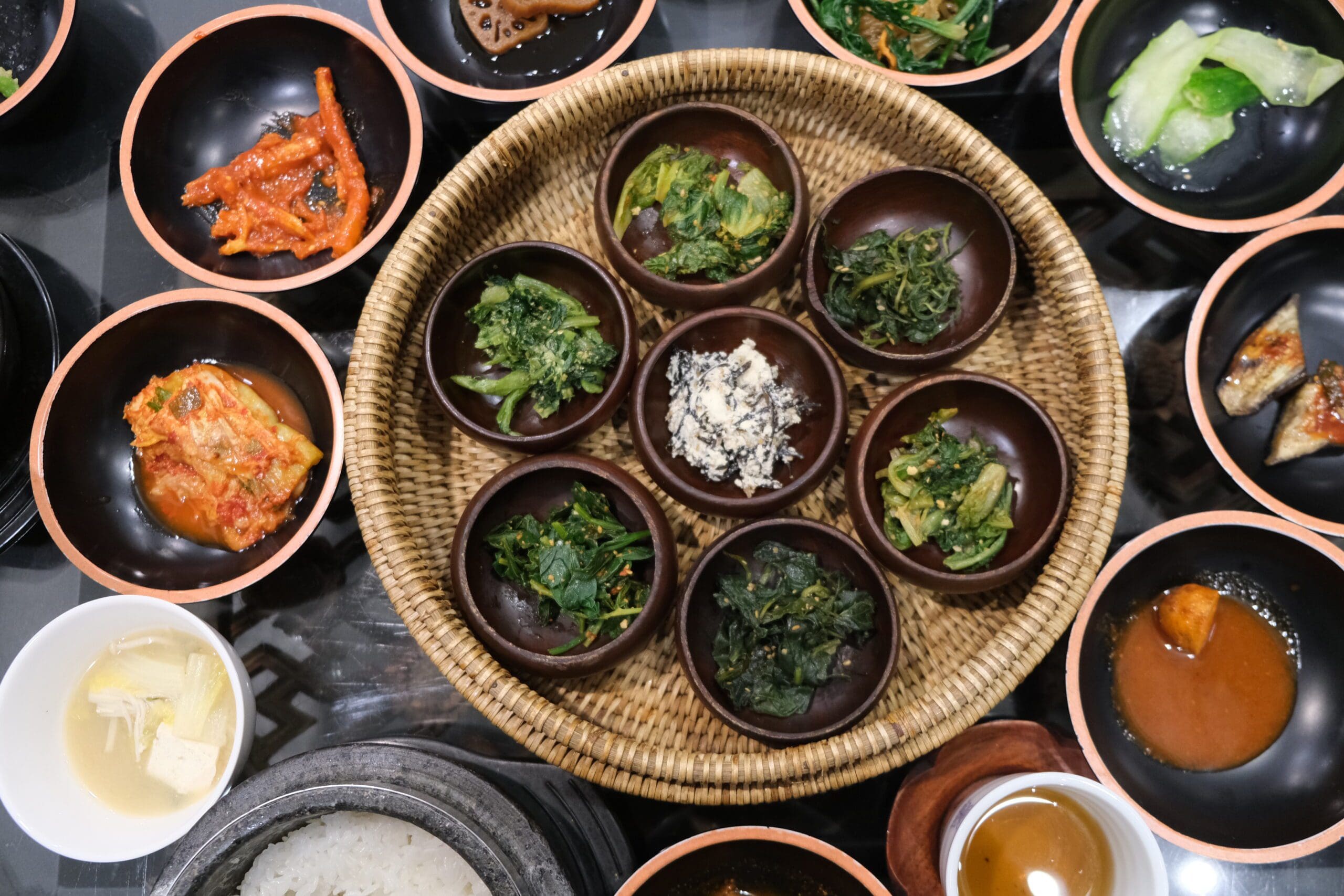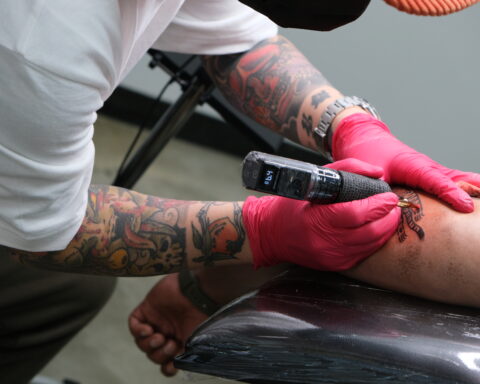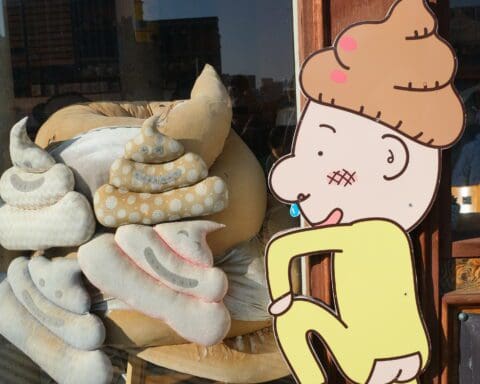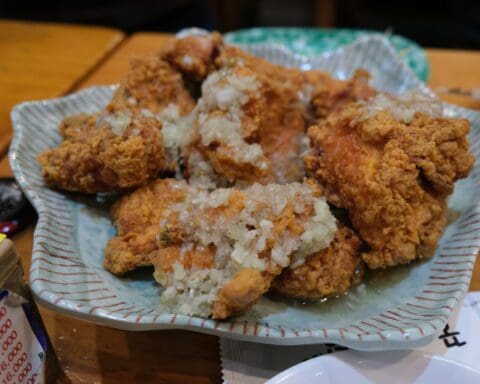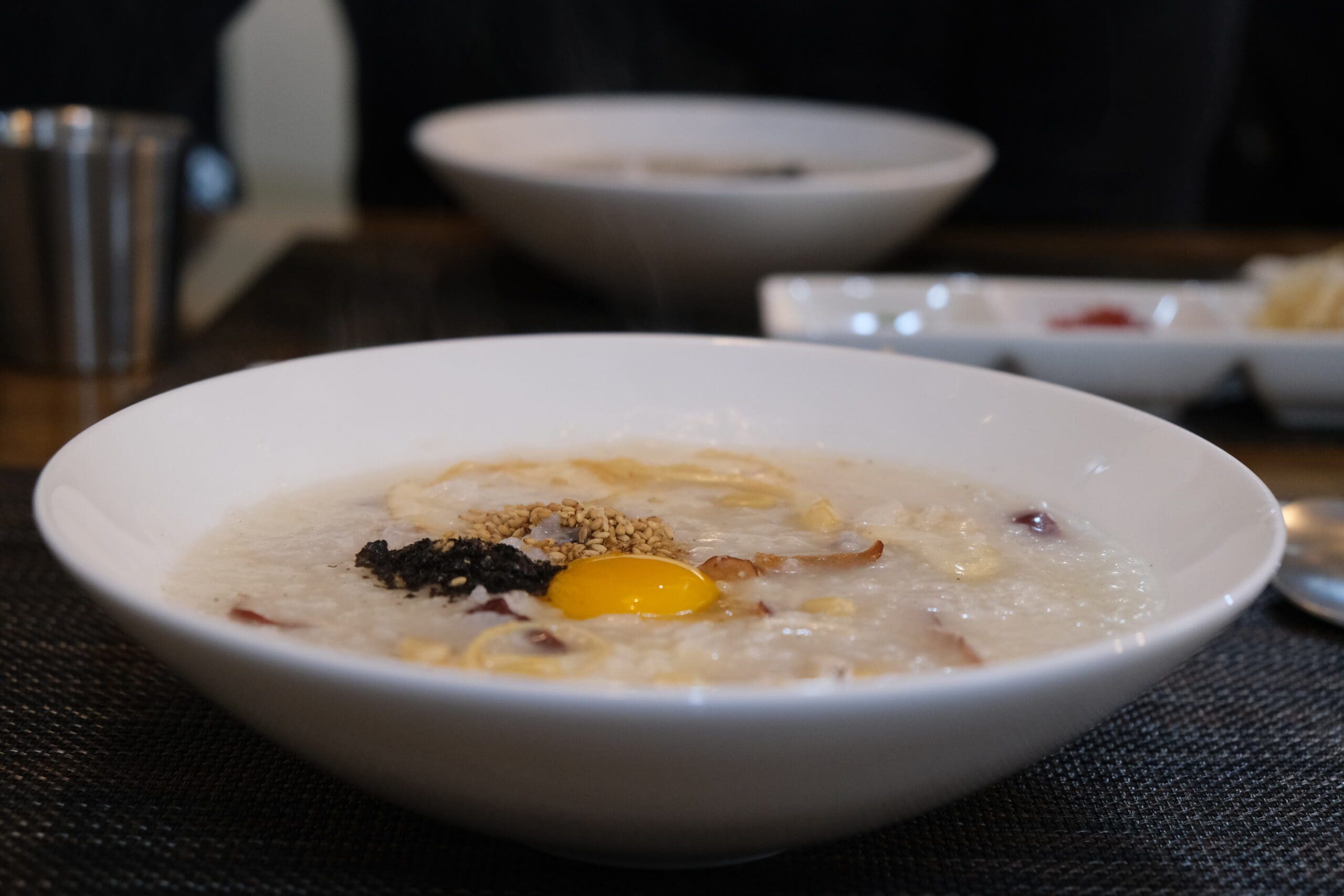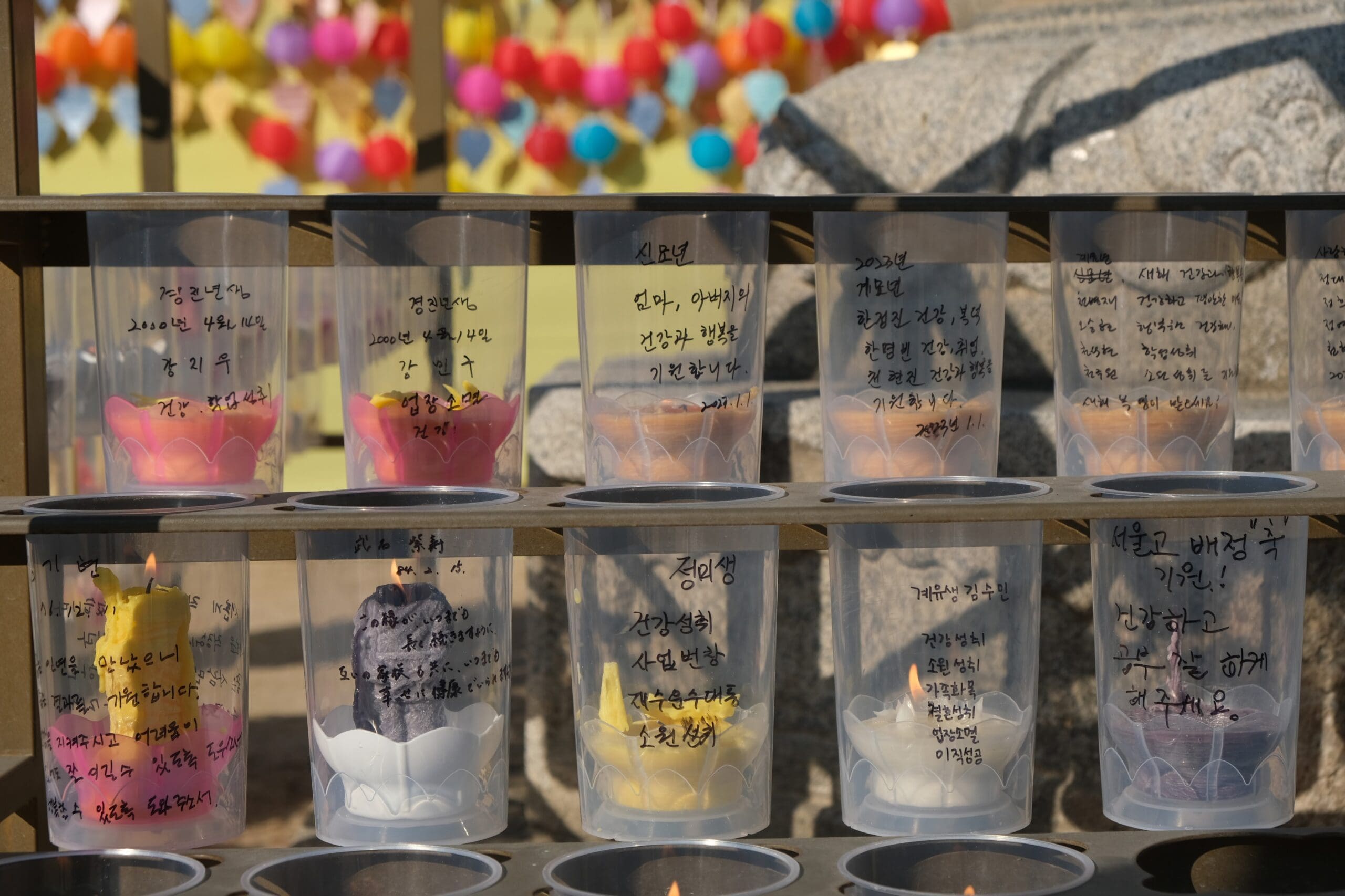Our first lunch during the Korea trip last month was Korean temple cuisine. It was inspired by my stay in Koyasan with two of my best friends years ago. We had Japanese temple cuisine, Shojin Ryori, during our stay in the Shukubo (temple lodging) there.
I had such a great time there, so I wanted to recreate a similar cultural experience in Korea with Fafa.
Unfortunately, I soon realized that temple lodging is separated for males and females ━ a basic fact that hadn’t crossed my mind since I shared the room with Yin and Vi in Japan. I mulled over it for a bit and decided I didn’t want to stay in the temple, in the wintertime, among strangers, in Korea ━ at least not this time. Thus the grand plan of Korean temple lodging has been halted.
The next best thing, I thought, would be the Korean temple cuisine. I found a few options for having Korean temple cuisine in Seoul and ended up booking lunch in a temple cuisine restaurant in Insadong, Sanchon. It had good reviews on Google, including one by a book blog I follow religiously.
Sanchon address: 2-1 Gwanhun-dong, Jongno-gu, Seoul, South Korea
On Christmas day, we combed through Insadong alleyways, followed multiple arrows with Sanchon written on it and reached the famed temple cuisine restaurant.
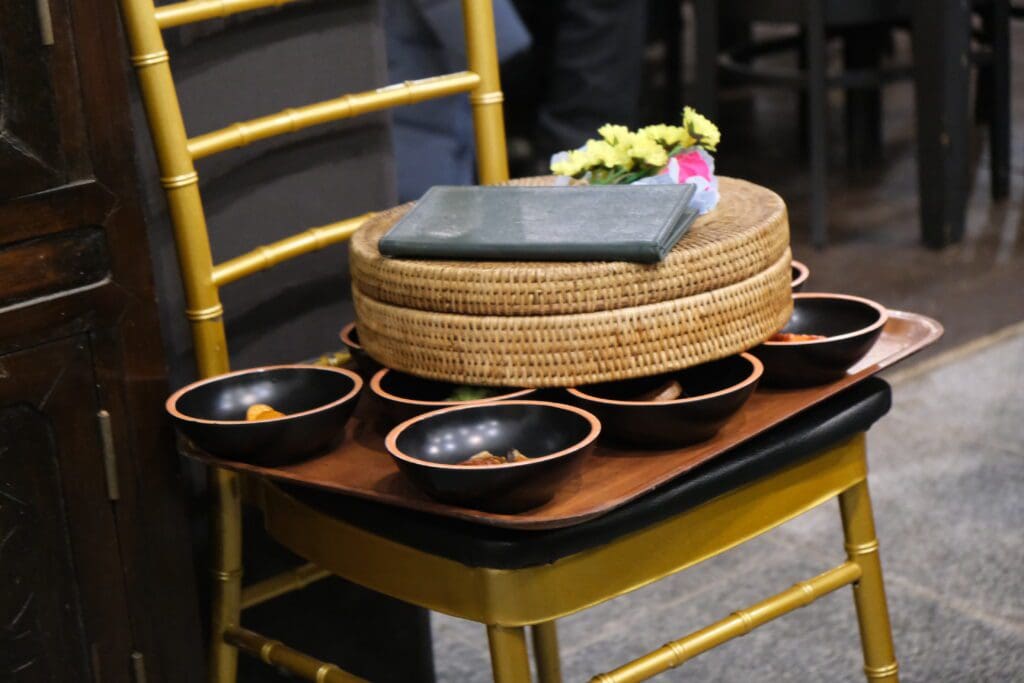
The restaurant was different from how I envisioned a place I’d eat temple cuisine in. It had a modern section and a gallery with an all-white interior, a part I didn’t explore. Instead, we were seated in the back corner of the restaurant ━ which, from the building architecture, resembled a traditional Hanok.
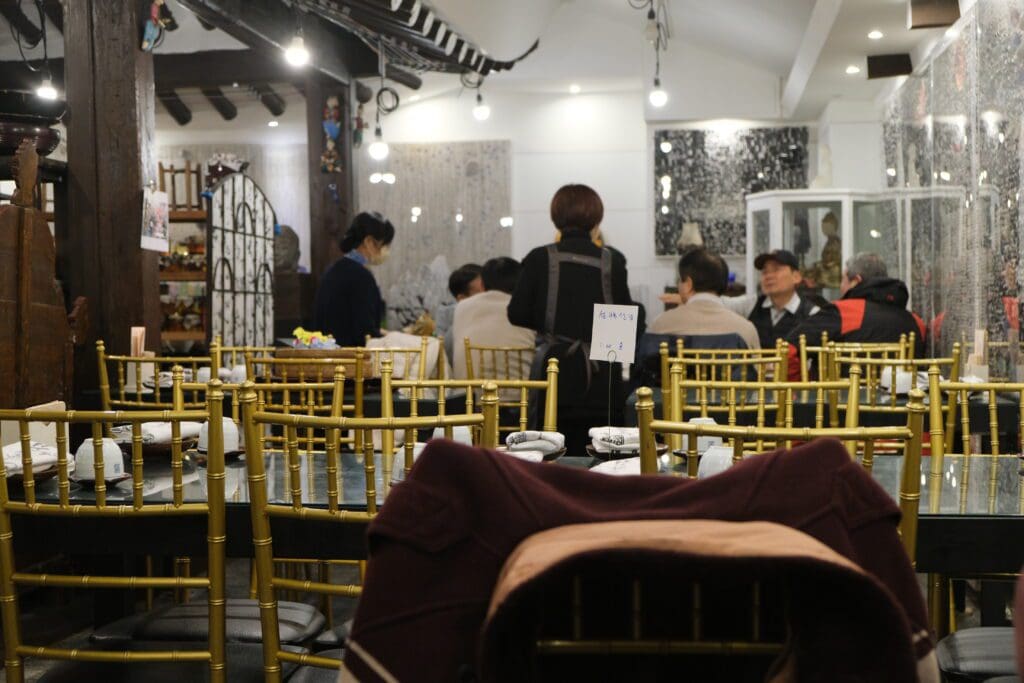
Traditional Korean Temple Cuisine
Traditional Korean temple cuisine doesn’t contain five stimulants ━ onions, green onions, garlic, green peppers(I assumed it includes all kinds of chilli) and Honggo. I don’t know what Honggo is. Google suggested it could be Hongeo, fermented fish, a Korean delicacy. But surely, the vegan temple cuisine wouldn’t single out a specific fish, so Honggo remains a mystery for now.
Korean Temple Cuisine Vegan-Friendly Set Menu
We had a set-lunch seasonal menu for 33k Won (40AUD) per person. The menu also mentioned that the restaurant uses the five stimulants discussed above and to specify if we didn’t want them. We decided not to go super strict with the temple cuisine and abide by the restaurant’s offering as is.
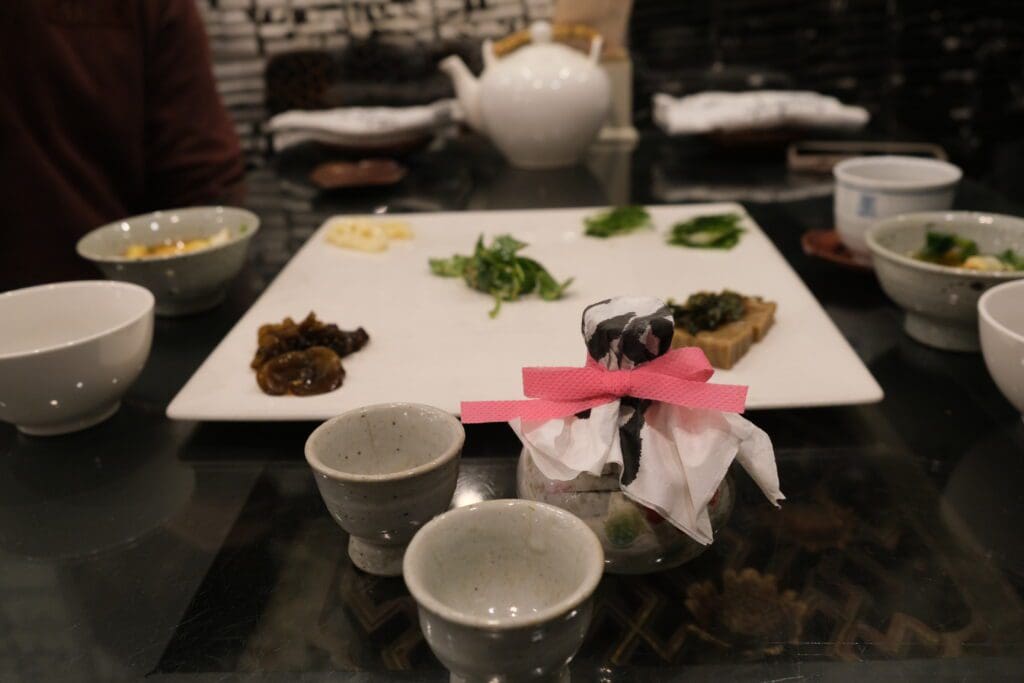
The first thing that came to our table was the drink in a small sake-like set. It was sweet, and I assumed alcoholic. It could be rice wine. Meanwhile, Fafa thought it was a sweet tea. Until now, we are not sure what it was.
Appetizers
There were five appetizers ━ seasonal porridge, watery plain kimchi, fried kelp of dried laver with grain, Dhania leaves (favourite vegetables for the meditation of Buddhist monks) and various kinds of seasonal vegetable pancakes and fresh vegetable salad.
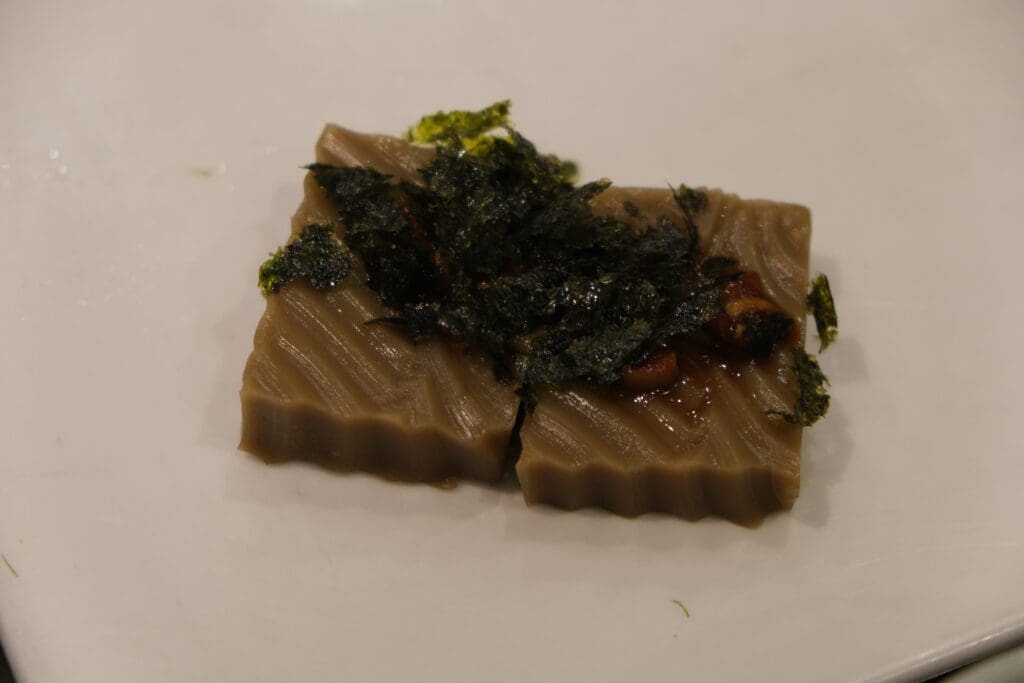
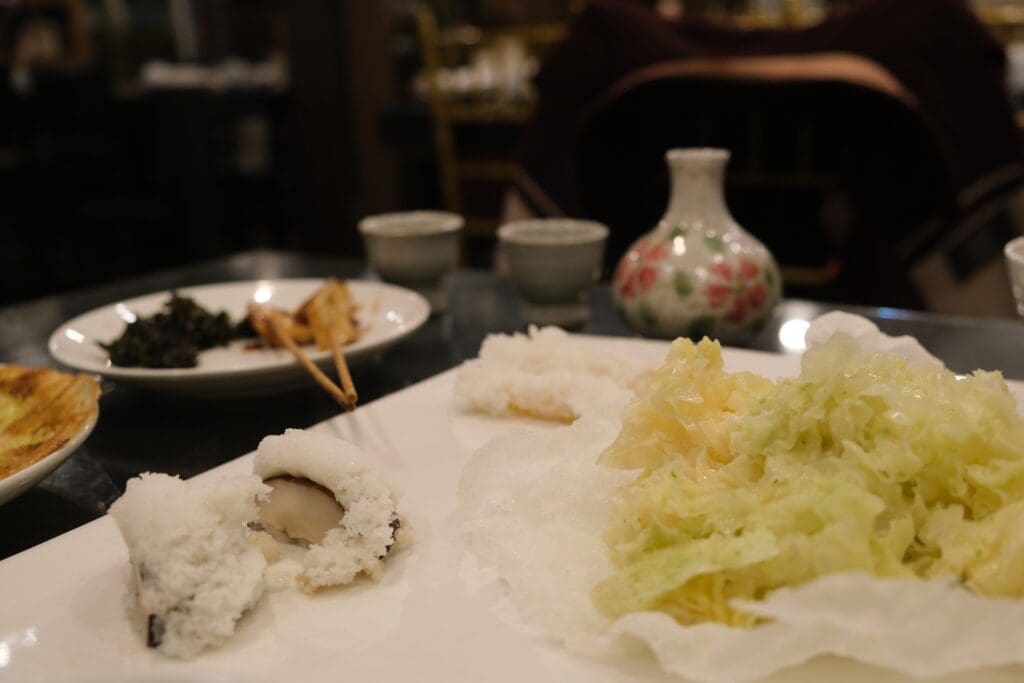
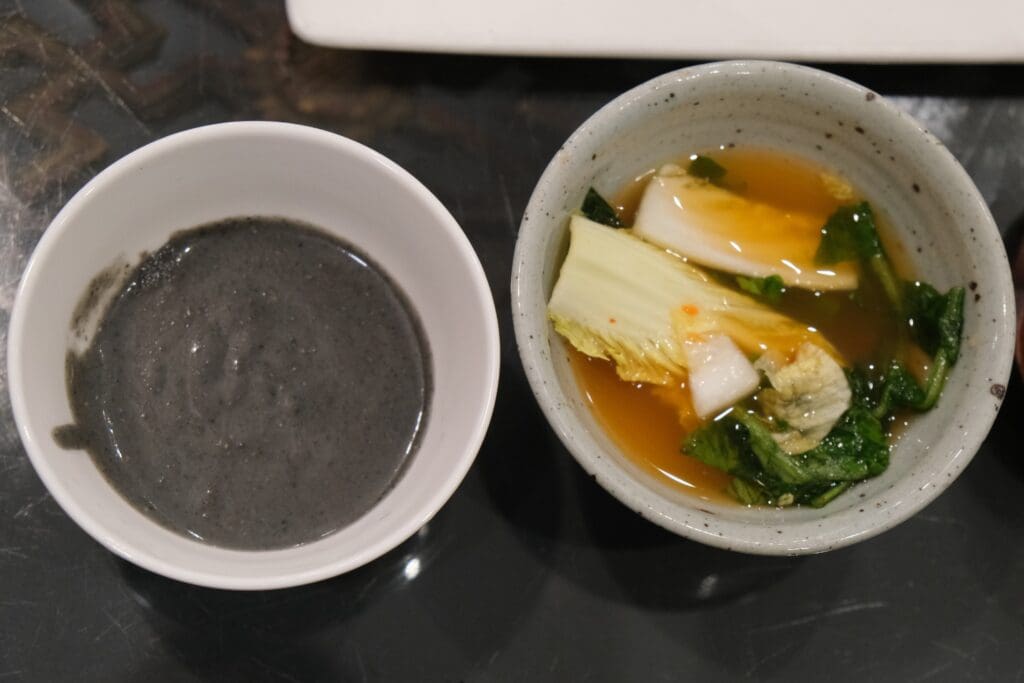
And everything was… cold and tasteless. I wondered:
Why does the food lack taste if Sanchon Korean temple cooking does include all those five “forbidden” stimulants? Why are most of the seasonal food cold? Shouldn’t winter food be warm?
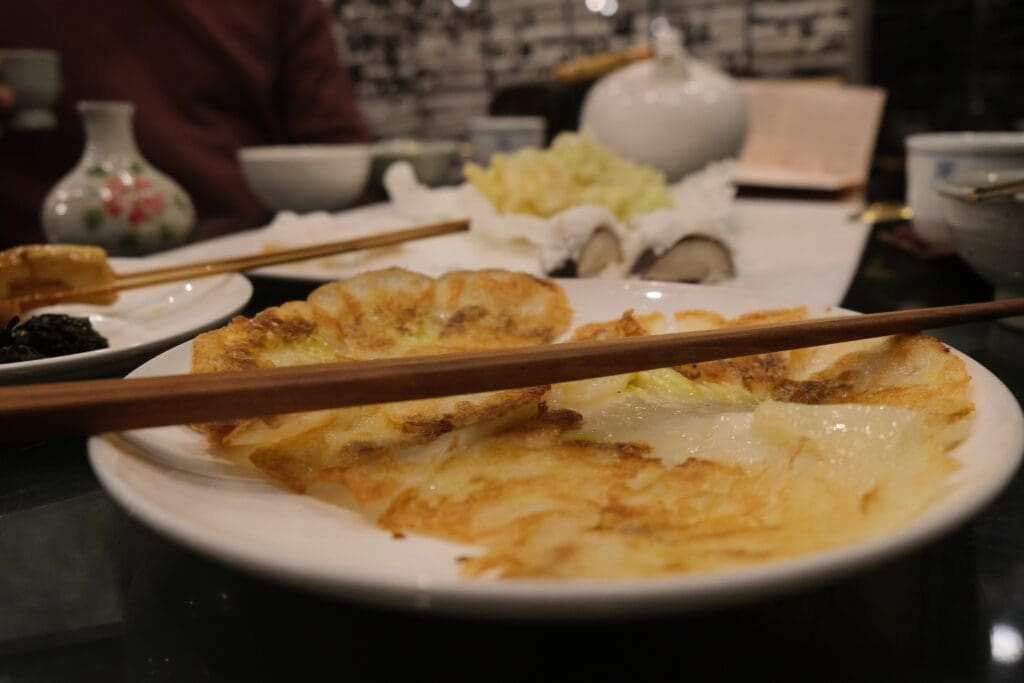
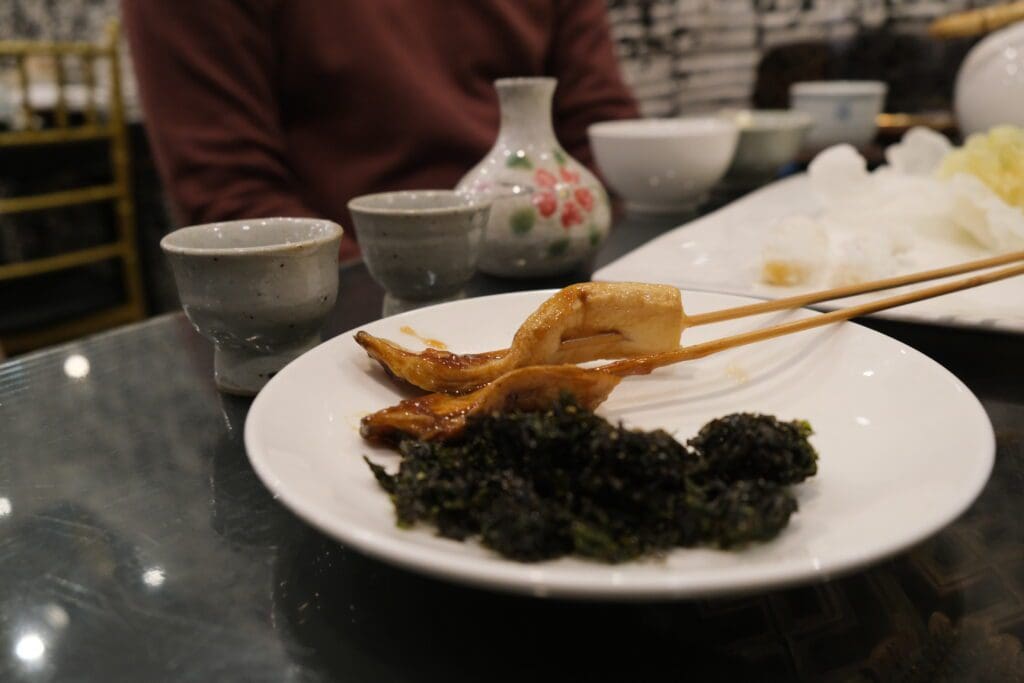
Main Course
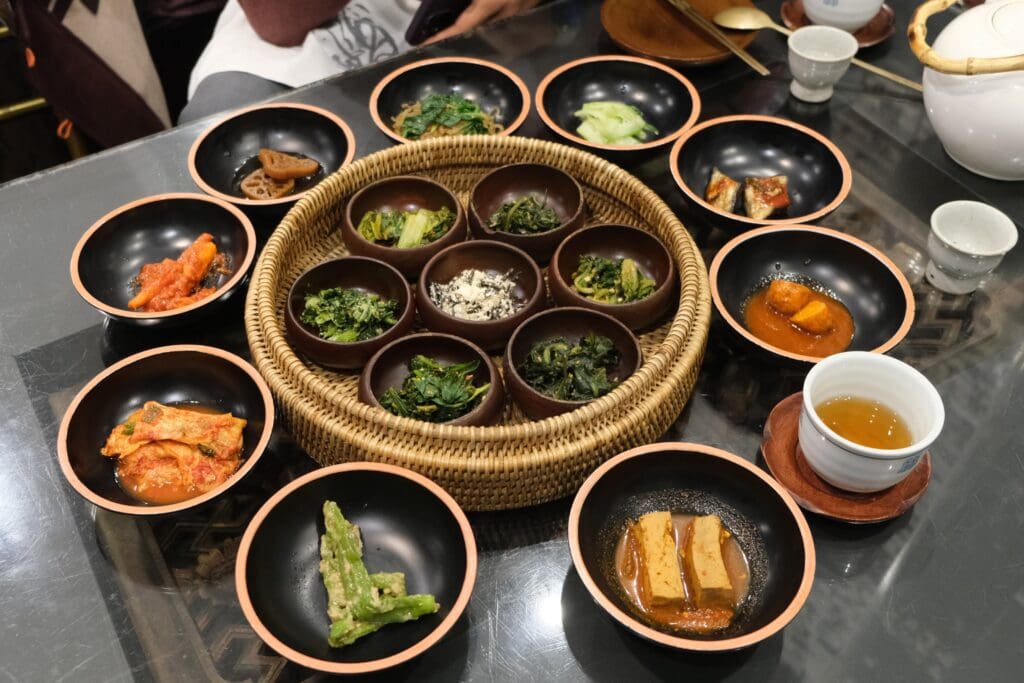
For the main course, we had seven wild herbs and vegetables (each with its’ seasonings ━ the menu said). Then there were pretty side dishes from seasonal vegetables, tofu, potatoes, Kimchi, Japchae (stir-fried glass noodles) and various vegetables and mushrooms.
The bill came. It was accompanied by rice and Soybean Paste Stew with tofu, mushrooms, radish, and red peppers in it.
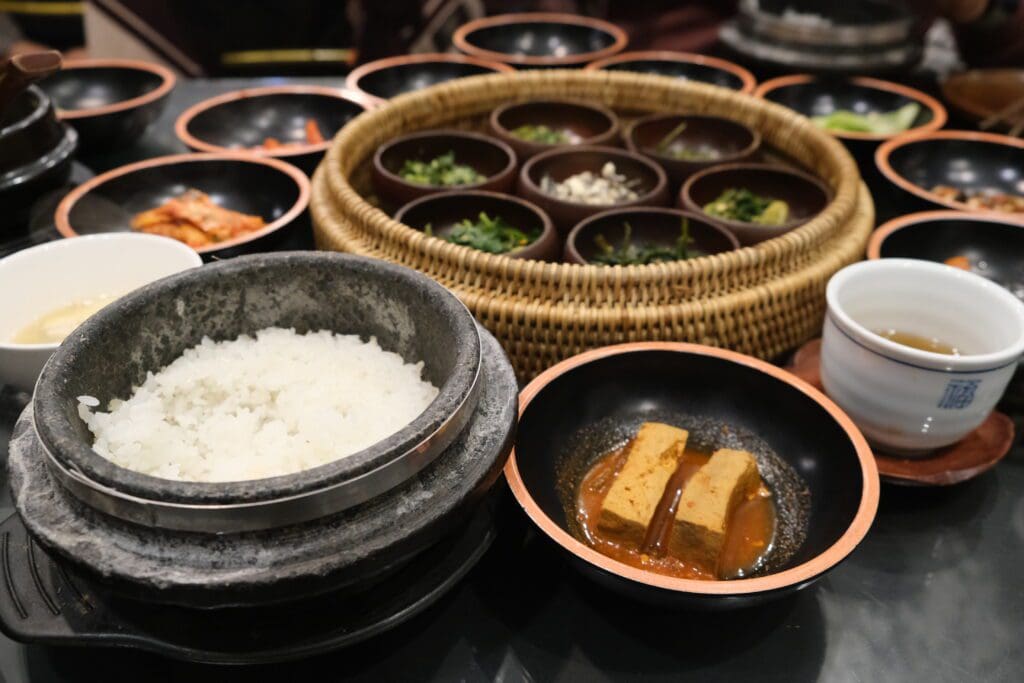
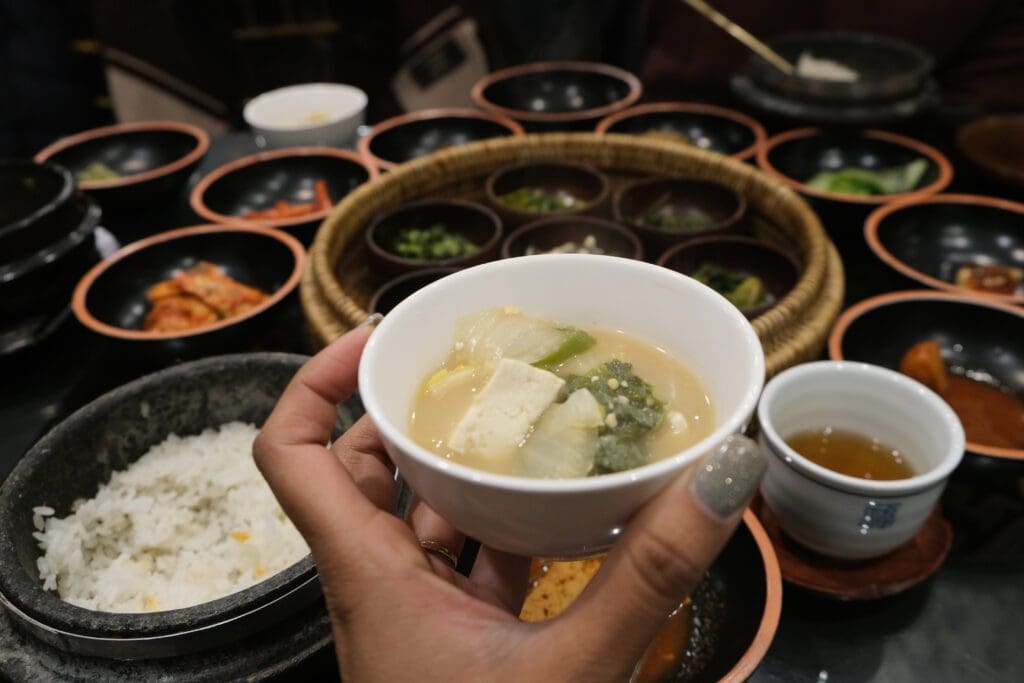
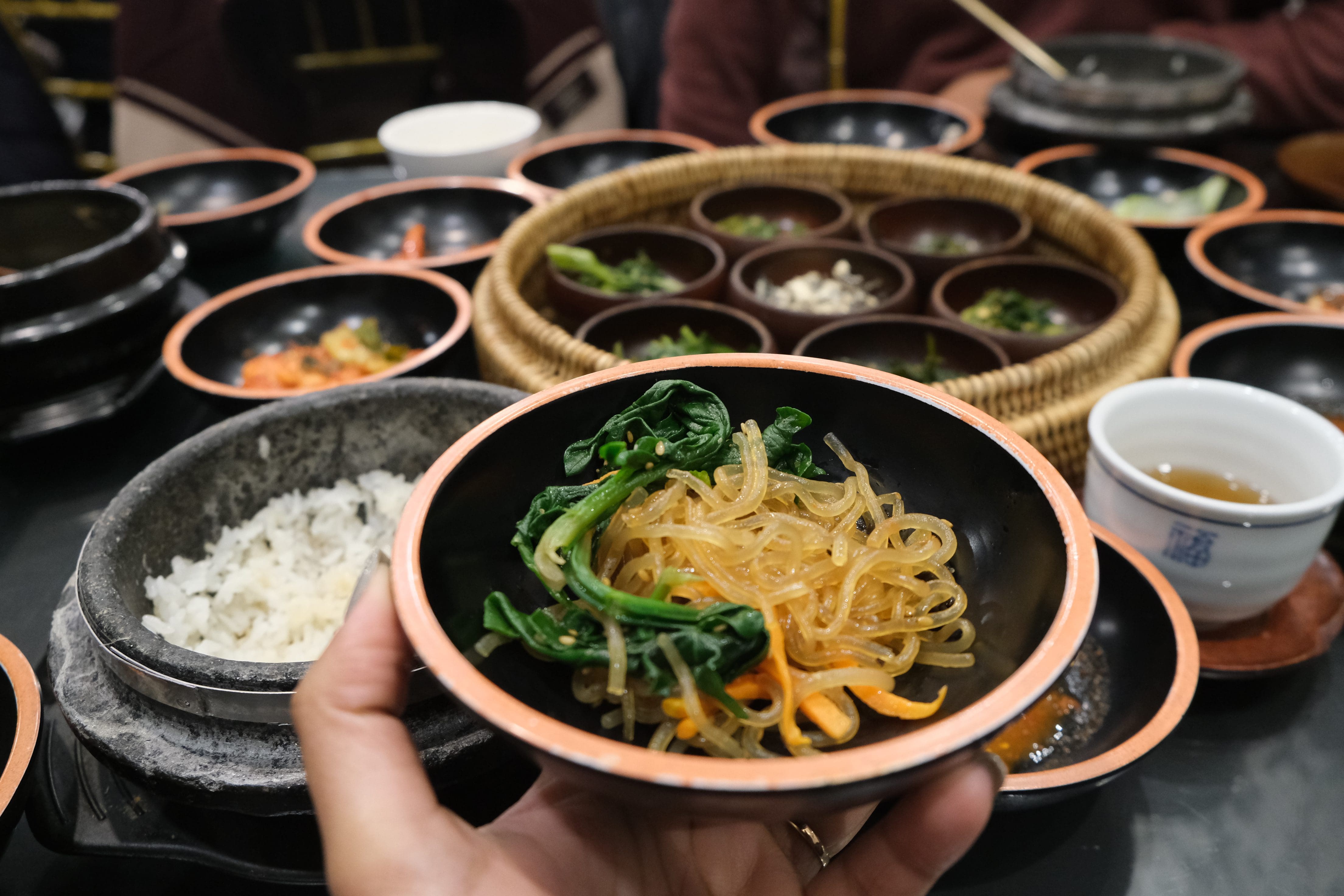
To be fair, the main course was better than the almost unedible appetizers. For one, they had some taste. The Japchae and the warm Soybean Paste Stew were actually nice. So were the tofu and green peppers banchan.
Still, we struggled to eat some others.
No Dessert, Just Bill
After trying our best to eat as much as we could so not to offend the food or the restaurant, we decided to leave ━ and leave behind what we couldn’t finish.
While standing in front of the cashier, another waiter approached us to say that we still had the dessert coming. Why would they give us the bill halfway through the course, then?
We weighed in and decided to skip the dessert altogether. The dessert could be good, but I don’t think it would turn the whole experience for us.
The Overall Experience
Yes, we didn’t like the food, which was fine because we came for an authentic Korean temple cuisine experience, and if our palette didn’t match the offering, it was on us.
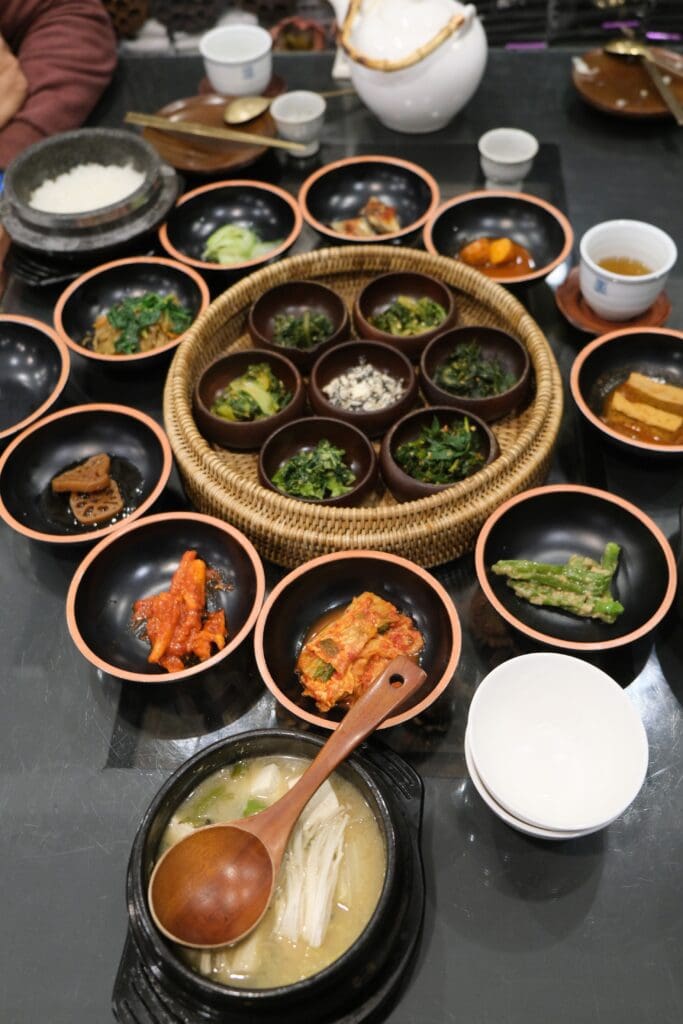
But the terrible service in Sanchon ruined the whole experience. From the very beginning, the service felt rushed and unkind. Particularly the brown waiter who seemed to hate us, people and life in general. He ignored our questions/comments, took the food without asking first repeatedly and put the bill halfway through our course.
I wonder whether the overall experience would be different if the waiter treated us with half decency.
So Korean Temple Cuisine…
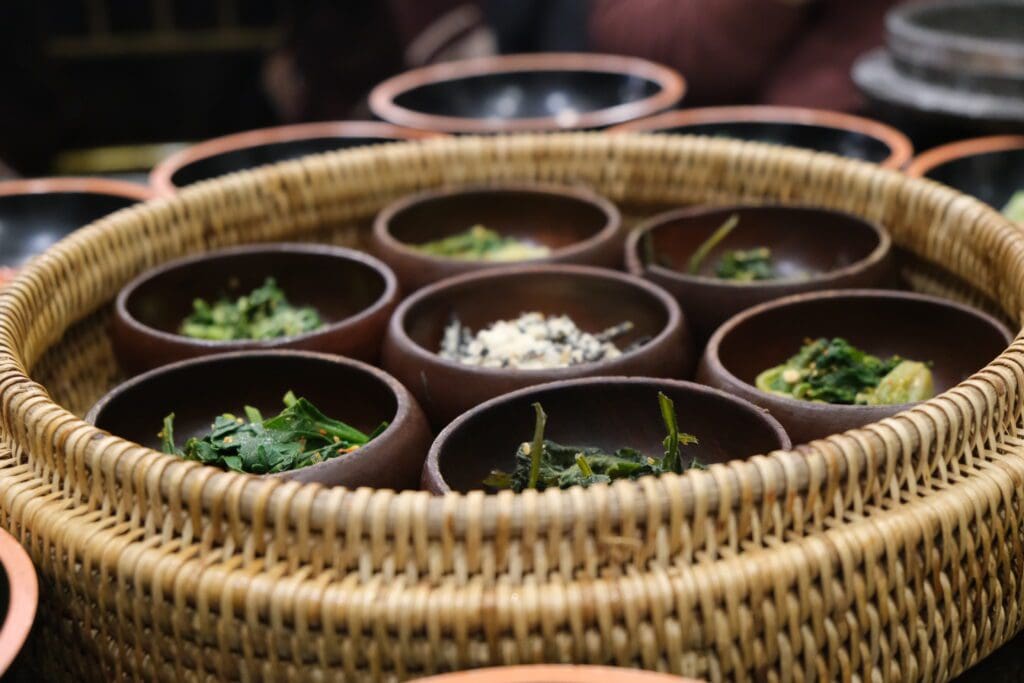
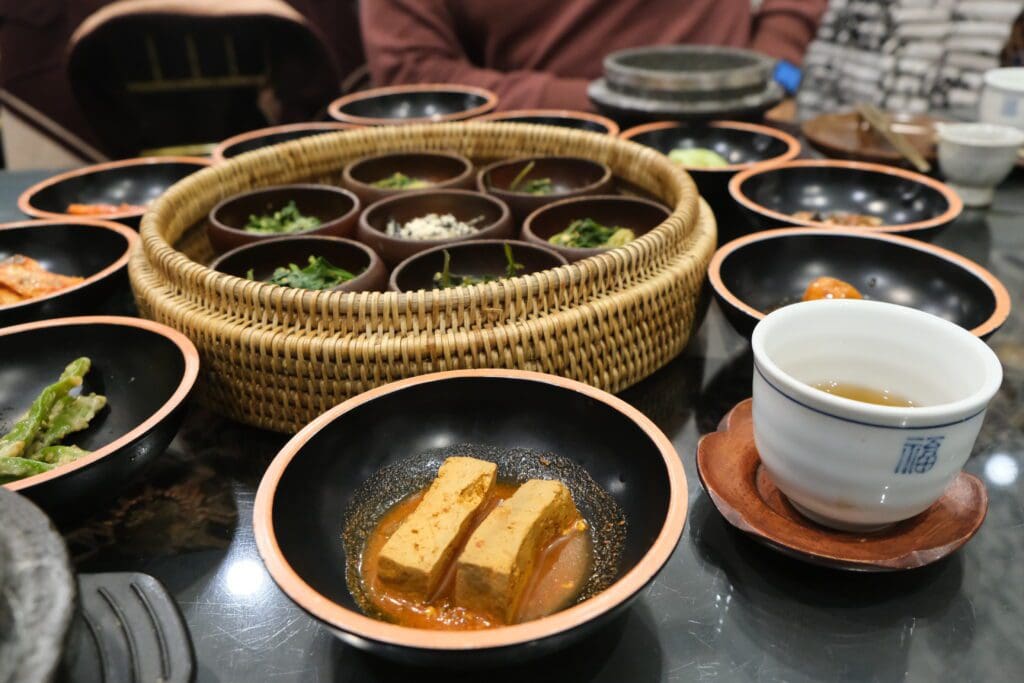
I have been sitting on this Korean temple cuisine topic for weeks. Contemplating whether to share here that I didn’t like the Korean temple cuisine I had in Korea. It seems so ignorant of me. Almost boxing me into an uncultured category. But I had always planned to eat and write about my experience here, just that I didn’t plan to like not like it. Maybe take this story with a grain of salt as one person’s experience (well, two if you include Fafa).
Follow me on Instagram @KultureKween for more recent updates.
